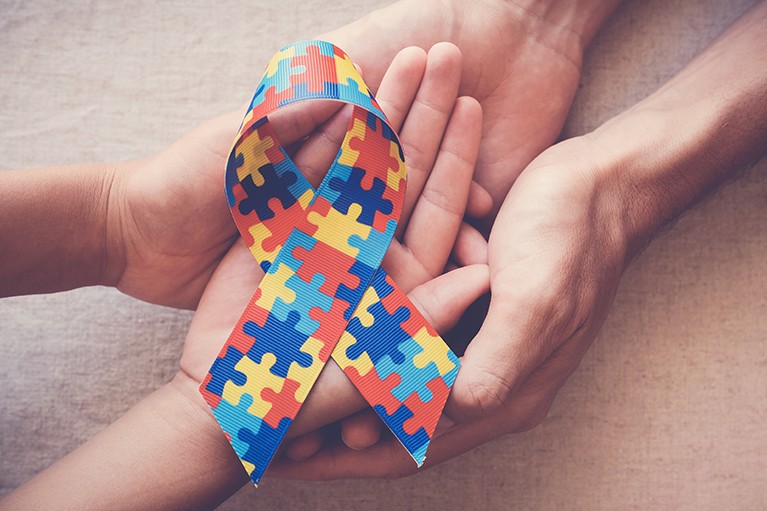Autism Awareness
April 1, 2022

Autism Spectrum disorder (ASD) is a developmental disability that can cause significant social, communication and behavioral challenges. In Guam alone there are an estimated 244 students within Guam’s public school system living with ASD. People with ASD may communicate, interact, behave and learn in ways that are different from most other people. This may require some people with ASD to be assisted in their daily lives in order to effectively navigate the education system which often needs adjusting in order to accommodate their specific needs and ensure their equal success. Meanwhile there are countless others living with ASD who may not need any assistance at all.
Previously misunderstood in the medical field, a diagnosis of ASD now includes several conditions that used to be diagnosed separately: autistic disorder, pervasive developmental disorder not otherwise specified (PDD-NOS) and Asperger syndrome. These conditions are now all called autism spectrum disorder.
Signs and Symptoms
Many people with ASD also have different ways of learning, paying attention or reacting to things. Signs of ASD begin during early childhood and typically last throughout a person’s life.
Children or adults with ASD might:
- Not point at objects to show interest (for example, not point at an airplane flying over)
- Not look at objects when another person points at them
- Have trouble relating to others or not have an interest in other people at all
- Avoid eye contact and want to be alone
- Have trouble understanding other people’s feelings or talking about their own feelings
- Prefer not to be held or cuddle, or might cuddle only when they want to
- Appear to be unaware when people talk to them, but respond to other sounds
- Be very interested in people, but not know how to talk, play or relate to them
- Repeat or echo words or phrases said to them, or repeat words or phrases in place of normal language
- Have trouble expressing their needs using typical words or motions
- Not play “pretend” games (for example, not pretend to “feed” a doll)
- Repeat actions over and over again
- Have trouble adapting when a routine changes
- Have unusual reactions to the way things smell, tase, look, feel or sound
Causes and Risk Factors
Scientists are still unsure of all the causes of ASD. However, studies have identified many causes for multiple types of ASD including environmental, biologic and genetic factors:
- Most scientists agree that genes are one of the risk factors that can make a person more likely to develop ASD.
- Children who have a sibling with ASD are at a higher risk of also having ASD
- Individuals with certain genetic or chromosomal conditions, such as fragile X syndrome or tuberous sclerosis, can have a greater chance of having ASD.
- When taken during pregnancy, the prescription drugs valproic acid and thalidomide have been linked with a higher risk of ASD.
- There is some evidence that the critical period for developing ASD occurs before, during and immediately after birth.
- Children born to older parents are at greater risk for having ASD.
ASD occurs in all racial, ethnic, and socioeconomic groups, but is about 4 times more common among boys than among girls. Understanding the factors that make a person more likely to develop ASD will help us learn more about the causes. The CDC is currently working on one of the largest U.S. studies to date of ASD called the Study to Explore Early Development (SEED) which seeks to look at many possible risk factors for ASD, including genetic, environmental, pregnancy and behavioral factors.
Diagnosis
Since there is no medical test, like a blood test, to diagnose ASD it can be quite difficult for a doctor to make a definitive diagnosis especially during the first couple years after being born. Doctors will look at a child’s behavior and development and can sometimes detect ASD at 18 months or younger. However, typically doctors don’t usually make an early diagnosis until after the age of 2. ASD however has a wide range of manifestations and many children do not receive a diagnosis until much older. This means that children with ASD might not get the early help they need, which can be critical in overall outcomes as they develop into adulthood.
Treatment
Getting a final diagnosis, and early help for children who need it is proven to help their development. There is currently no cure for ASD, however research shows that early intervention treatment services can improve their overall health outcomes. Early intervention services help children from birth to 3 years old learn important skills and can include therapy to help the child walk, talk and interact with others. Even without a diagnosis early intervention treatment services are available for most U.S. residents through The Individuals with Disabilities Education Act (IDEA) which states that children under the age of 3 years who are at risk of having developmental delays may be eligible for services. These services are provided through an early intervention system run by the local government and typically starts with an evaluation. In addition, treatment for particular symptoms, such as speech therapy for language delays, often does not need to wait for a formal ASD diagnosis.
Accessing Services for Autism Spectrum Disorder
Getting children with developmental delays or behavior concerns early help can make a huge impact in their overall development and life after adolescence. However, many such children are not identified as early as possible. This results in these children struggling to adapt especially to social and educational settings such as in school, at home or in the community.
Following early intervention which typically takes place between ages 0 to 3 years and helps children to walk, talk and interact with others, special education services will take over as the child begins to enter the educational system. Children with disabilities, including ASD, may be eligible for services through the local education system to assist them as they grow and learn in school to ensure that there are no barriers to their development. Children with ASD will often develop an individualized education plan or a 504 plan with their school, and will begin to receive services prior to formally starting school, even if the child has not been fully diagnosed with ASD. This will help the child ease into school life and further ensure that they have the help they need and are fully prepared so that they can grow and learn alongside their peers.
Keeping Your Child Happy and Healthy
If you have or are related to a parent who believes their child may have ASD, it’s important to spread the word on how early intervention can impact the child’s life. Getting an early diagnosis and early help for those with ASD helps further ensure that the child gets all that they need to be successful in their future. It’s also important to remember that ASD is not something to be ashamed of or feared, rather a difference in how a person learns or relates to their environment. As with many things, it just takes a bit of understanding and for the community to come together to help our brothers and sisters who have ASD or are a parent of someone with ASD.
For our island community there are many things you can do to help raise awareness and assist others to ensure that everyone has equal access and opportunity to live and enjoy our island home. If you’re interested and want to learn more, check out these local organizations and public services for more information on how you can get involved or get the assistance you need:
GUAM Resources:
CNMI Resources:
- Autism Society of the Commonwealth of the Northern Mariana Islands
- Northern Marianas College University Center for Excellence in Developmental Disabilities (UCEDD)
- Commonwealth of the Northern Mariana Islands Council on Developmental Disabilities
Sources:

